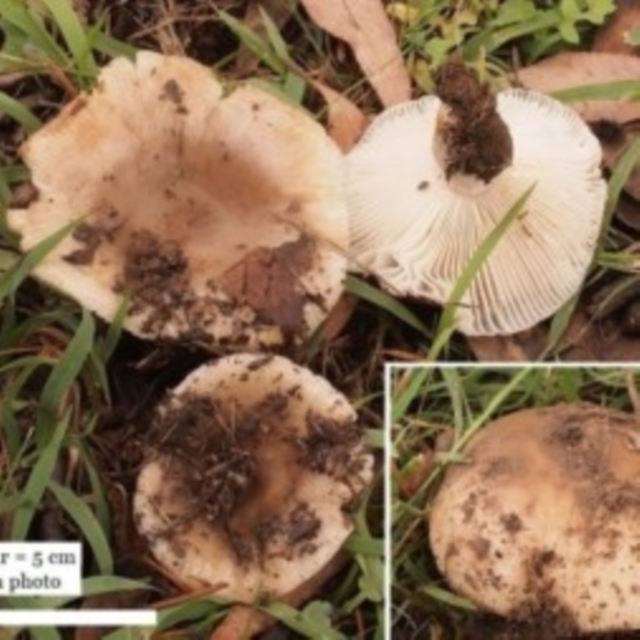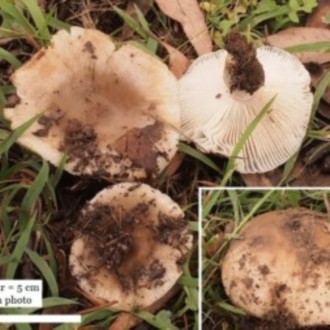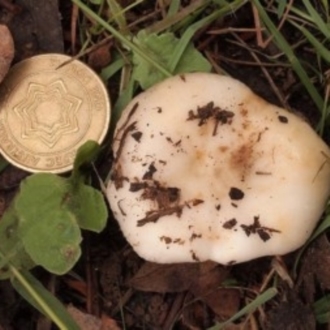Russula amoenolens-like
The fruitbody is a mushroom with a cap atop a central stem. The cap may be up to 10 centimetres wide. It is smooth, slimy when fresh and in shades of brown (paler towards the striate margin). Initially it is convex but flattens with age and may develop a central depression so as to resemble a shallow funnel. The gills are white. The stem is white, smooth, dry and up to 6 centimetres long and 3 wide.
There is neither a partial nor a universal veil.
Spore print: white to creamy.
The mushrooms appear on the ground near northern hemisphere tree species.
This 'species' has been created on Canberra Nature Map as a pigeon-hole for those Russulas that appear near introduced northern hemisphere trees and that superficially resemble Russula amoenolens. There are several such species in the northern hemisphere (e.g. Russula cerolens, Russula pectinatoides, Russula sororia) that are mycorrhizal with various broad-leaf or coniferous trees.
Warning: Sliminess disappears in dry conditions. If you come across a glossy, non-slimy mushroom you may have a cap that had been slimy - but glossiness alone is NOT proof of earlier sliminess. If there is some leaf debris on the cap see if you can brush it off. If you can't, then try to pull it off, gently at first and then more forcefully if necessary. If it sticks so strongly to the cap that some of the cap tissue sticks to the leaf, assume that the cap was slimy earlier.
Look-alikes
Brown is a common colour in mushrooms and fungi in some other genera produce brown, funnel-like mushrooms.
Russula amoenolens-like is listed in the following regions:
Species information
- Russula amoenolens-like Scientific name
- Common name
- Not Sensitive
- Exotic
- Non-Invasive
- Machine learning
Follow Russula amoenolens-like
Receive alerts of new sightings
SubscribeLocation information
-
Places
Macquarie, ACT









